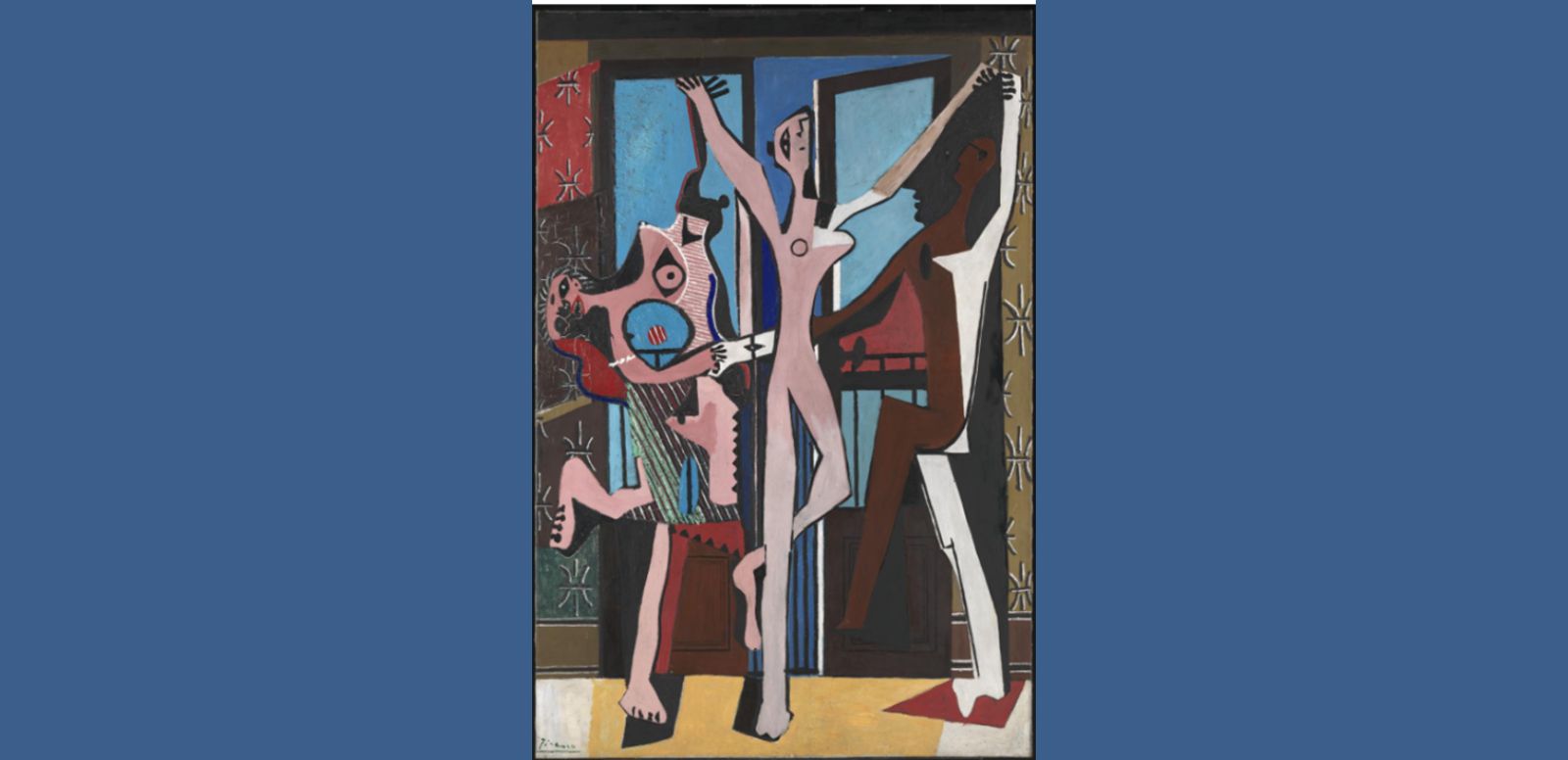
Tate Museum
© Sucesión Picasso, VEGAP, Madrid, 2024
Pablo Picasso's The Dance (1925) is a confluence of his Cubist and Surrealist style, characterized by an intense exploration of form and color to convey complex emotions and narratives.
Initially, the work was conceived as a realistic depiction of ballet dancers rehearsing, but a personal tragedy of Picasso's, the death of his friend Ramon Pichot, a well-known Spanish painter of the time, profoundly influenced his artistic approach. Twenty years earlier, Pichot, along with another friend, Carlos Casagemas, a Spanish painter and poet, had been involved in a love triangle with Germaine Gargallo, a model, which ended tragically with Casagemas' suicide. The memory of this event, triggered by Pichot's more recent death, caused Picasso's approach to take a turn.
The piece presents several angular and distorted figures in vivid colors on densely worked pictorial surfaces, which seem to express violent emotions, and may represent Pichot, Casamegas and Germaine Gargallo. The heritage of Cubism is present in this work, with the representation of deformed heads and a non-naturalistic distribution of facial features.
Picasso may have been inspired by treatises on neuropsychiatry, such as the book by French neurologist Jean-Martin Charcot, Les démoniaques dans l'art, which were circulating in the surrealist sphere at the time, and it seems that the three figures represent the phases of a "great attack of hysteria".
The first figure, on the far left, represents the acute phase, with grotesque contortions and wide movements. The figure in the center adopts a posture reminiscent of the iconography of the crucifixion. The last figure, on the other hand, is joined by the hand to the figure on the left.
Picasso's The Dance (1925) is a piece that encapsulates an emotional complexity that explores the intersection between art, psychology and human experience.
Sources:
Tate Museum: https://www.tate.org.uk/research/tate-papers/28/picasso-three-dancers
Tate Museum: https://www.tate.org.uk/art/artworks/picasso-the-three-dancers-t00729
Acción Cultural Española: https://www.accioncultural.es/media/Default%20Files/activ/2017/att/2/PiedadyterrorenPicasso_ES.pdf
Cambridge Scholars: https://www.cambridgescholars.com/resources/pdfs/978-1-4438-5169-5-sample.pdf

